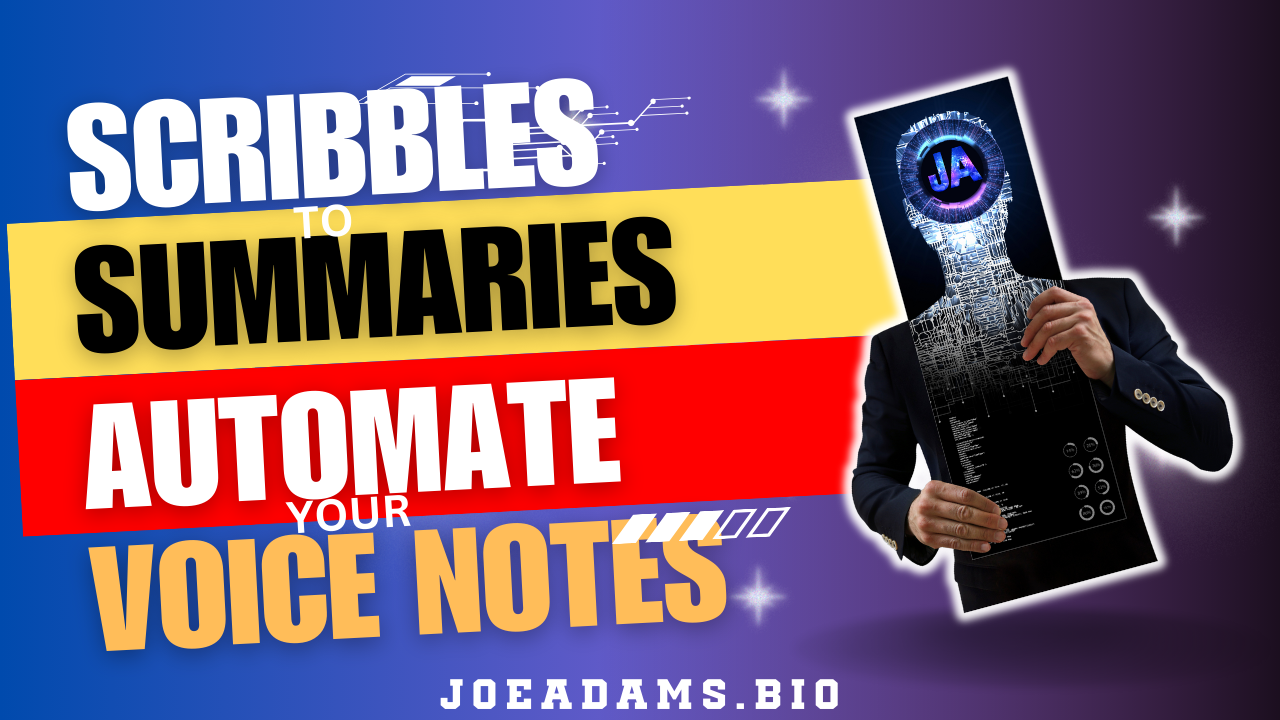Introduction
If you are like me and have an ADHD brain, you probably find yourself struggling with the notes you take. Whether it’s writing them all down in a notebook and taking detailed notes so you don’t forget, or putting them in some sort of app, it’s still a struggle. What I find myself doing is a little bit of both. In the car while I’m driving, I will take a voice memo. If I’m in the office, I will write notes down copiously. But what I have also found myself doing lately is writing notes down in a notebook, then transcribing them to voice and adding in context in the voice note.
But how do you get from voice notes or chicken scratch on a piece of paper to a nice bullet point summary that you could record in some database like Notion or Evernote, or even send to your team? Well, as I’ve been working on some AI automation workflows for personal use, I thought—why can’t I have AI transcribe my voice notes, summarize them, and then create a nice summary for me that is clean and readable? There are plenty of apps that can do this for you, but as a tech person, and in the tech industry, if I were to get asked that question, my answer would simply be, “Because I can!” That’s just the nature of being in the tech industry.
You’ve probably heard of Zapier—most likely because they are advertising a lot on social media. But Make.com (formerly Integromat) is a far superior AI and Workflow Automation tool. I’ve gotten to know the Make.com UI very intimately lately because I am trying to record and organize my personal and professional life, mainly so I can find things later when I need them. In the post below, I go over how I created an AI Automated assistant that takes my voice notes, transcribes them, summarizes the transcript, and then creates a nice, readable format with Action Items, Follow Ups, and important information.
I also made a step-by-step video on how to do this, which you can watch on YouTube. I would be grateful if you could give it a like and subscribe.
Step-by-Step Guide
1. Uploading the Audio File
To begin, record your voice memo and upload it to Google Drive. This will enable you to access the file from any location and facilitate the automation process.
2. Triggering the Automation Process
In Make.com, create a new scenario and add a trigger module. Select Google Drive and choose “Watch new files in a folder.” This will trigger the automation process whenever a new file is uploaded to the specified folder.
3. Downloading the File
Add another module and select Google Drive. Choose “Download a file” and select the file you uploaded in the previous step. Collect the file ID, which will be used in the subsequent steps.
4. Transcribing the Audio File
Add another module and select OpenAI. Choose “Create a transcription” and select the file ID from the previous step. Set the output to text. This will generate a transcription of your voice memo.
5. Creating a Summary
Add another module and select Perplexity. Choose “Create a chat completion” and enter the transcription text. Set the role to “user” and the model to the default one. Set the tokens to 500. This will generate a summary of your voice memo.
6. Storing the Data
Add another module and select Airtable. Choose “Create a record” and select the table where you want to store the data. Map the fields as follows:
- Voice Note Transcription: Output from OpenAI.
- Perplexity Generation: Output from Perplexity.
- Approval Status: Set to “pending” for review.
Conclusion
Creating a comprehensive summary of a voice memo is now easier than ever. By leveraging innovative tools and platforms like Google Drive, Make.com, OpenAI, Perplexity, and Airtable, you can automate the process, saving time and increasing efficiency. This step-by-step guide provides a clear roadmap for anyone looking to streamline their voice memo management and summarization process.

